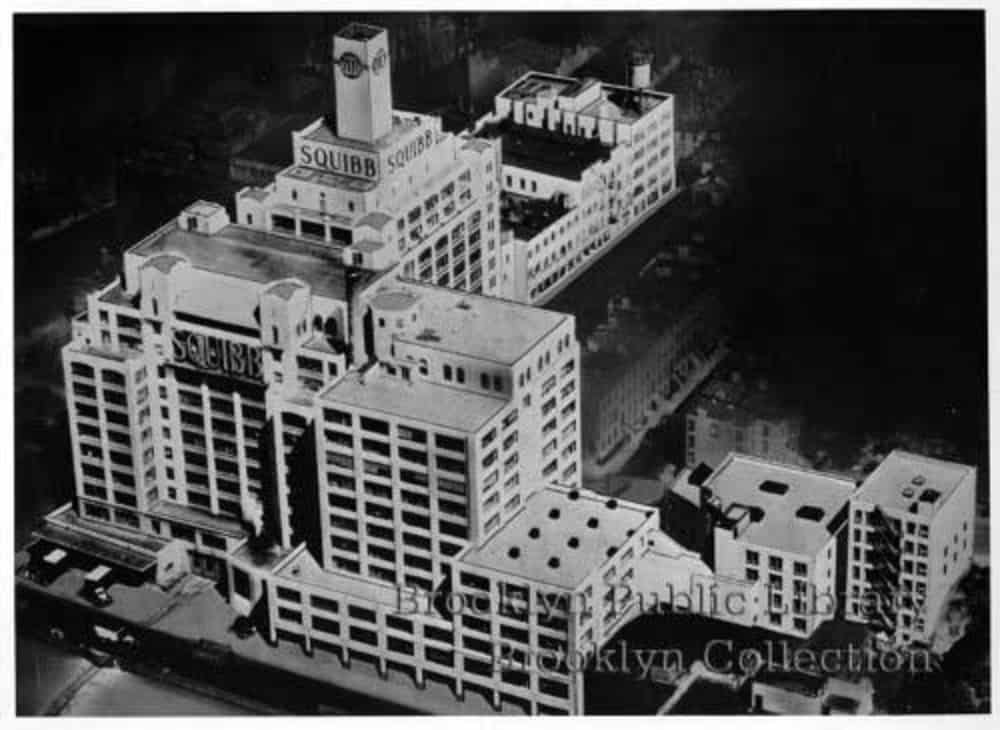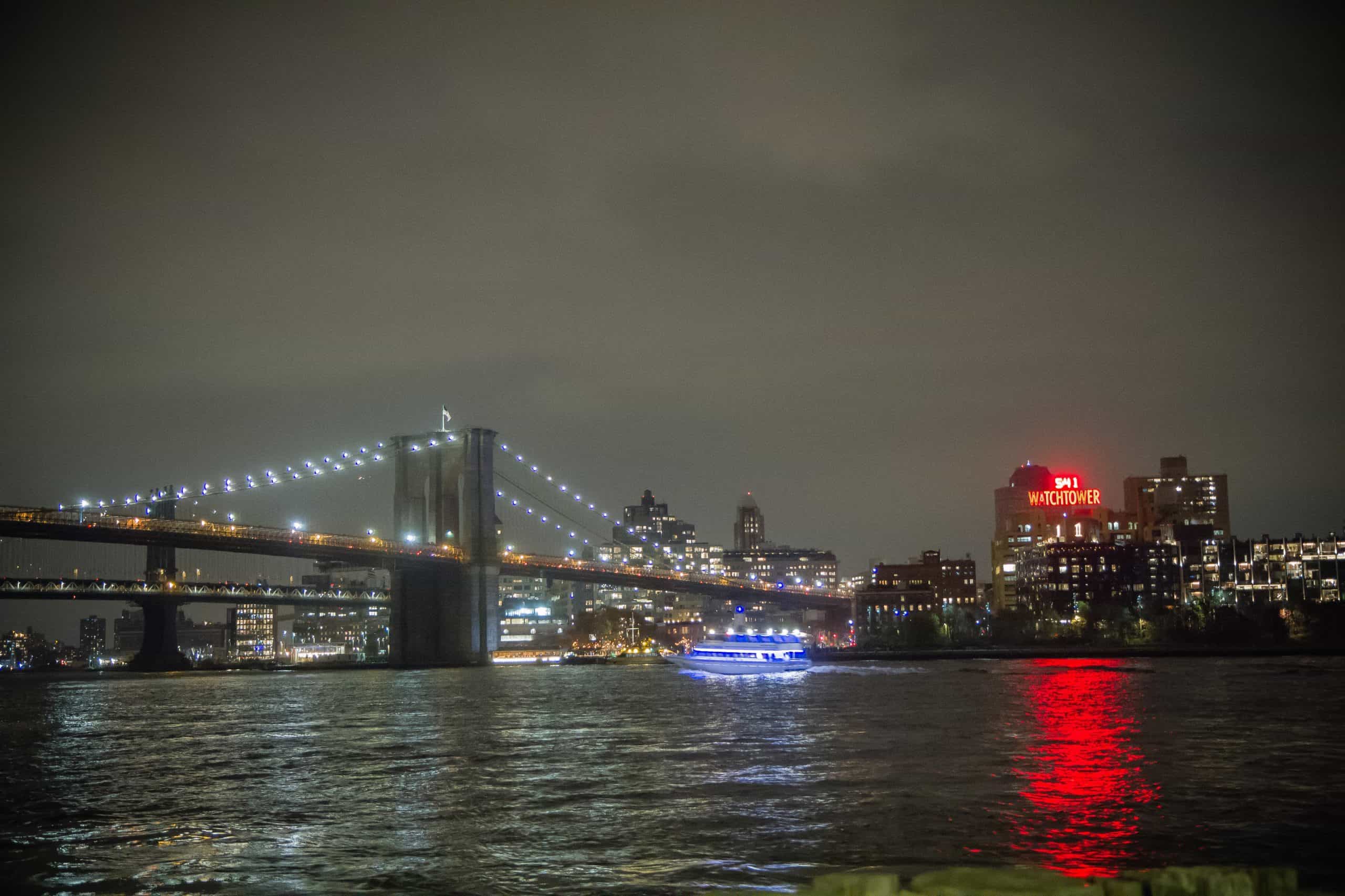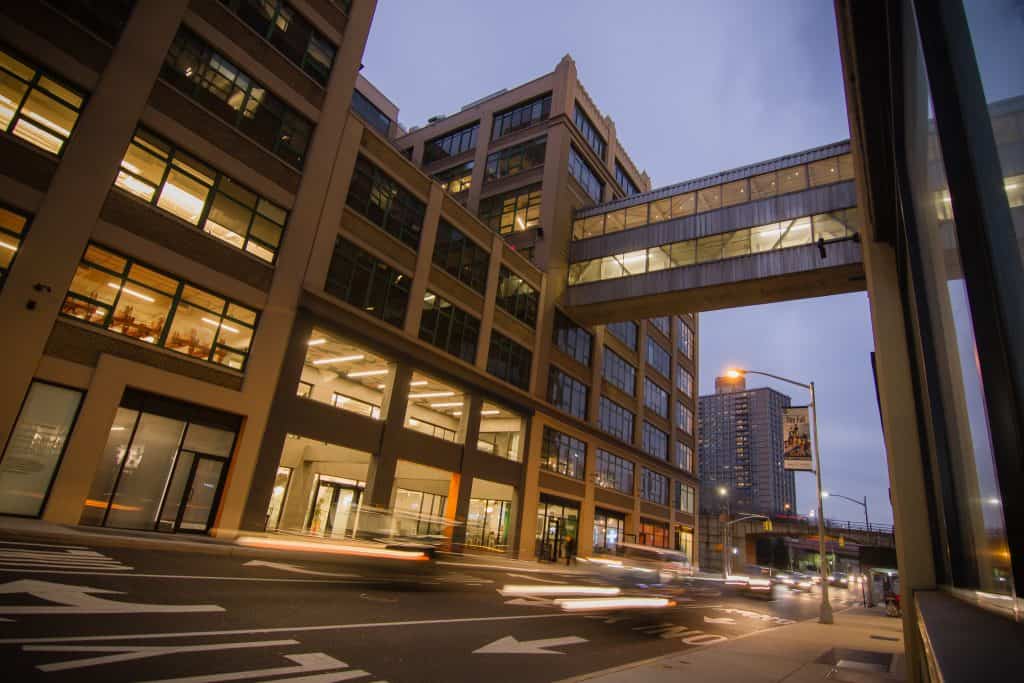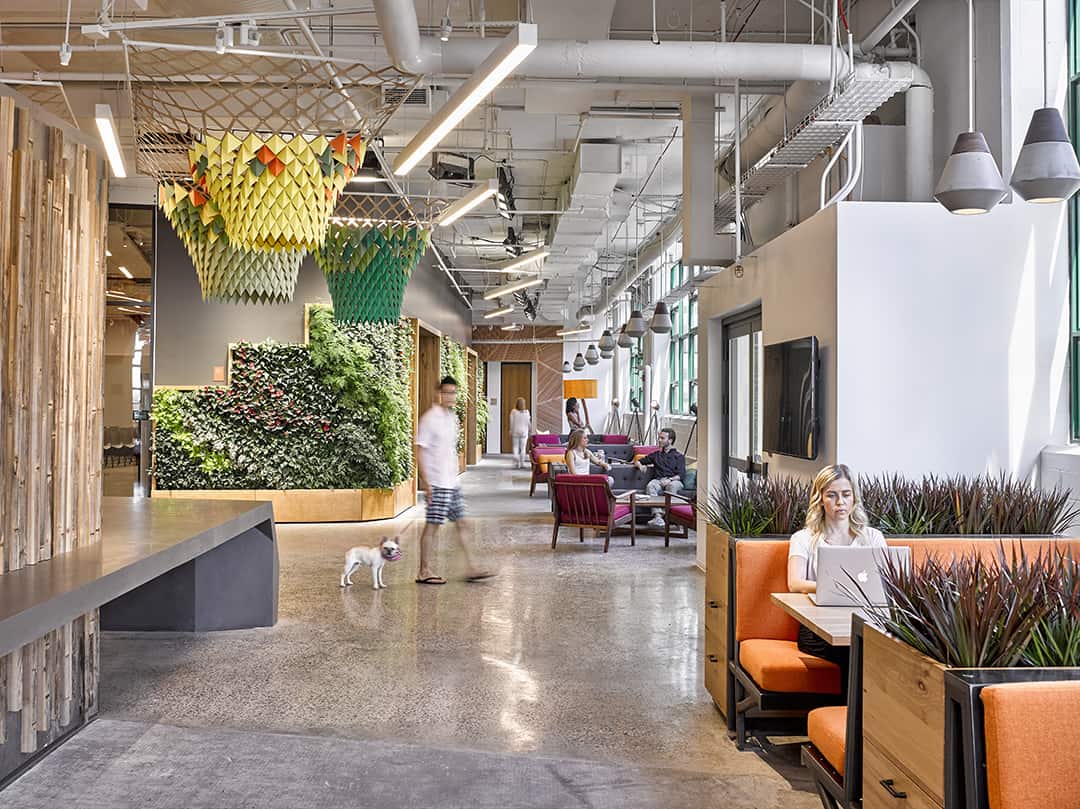For decades, as New York commuters traveled southeast on the Brooklyn Bridge after work, a large red sign flickered to life as twilight neared. Together, the 15-foot-tall LED letters formed the word “WATCHTOWER,” a sign as synonymous with Brooklyn as the Hollywood sign is to its hometown. It was the most visible feature of the Jehovah’s Witnesses headquarters, a sprawling complex that occupied nearly 40 buildings and properties in the Brooklyn Heights and DUMBO (Down Under Manhattan Bridge Overpass) neighborhoods of New York City’s most populous borough.
But the days of the Watchtower sign are numbered. That’s because the Jehovah’s Witnesses sold off their office complexes one-by-one as they consolidated their operations and eventually moved their headquarters to upstate New York, and the building’s new owners plan to remove the sign in the coming weeks.
While the Watchtower sign itself is a recognizable feature of probably the most iconic building in the expansive complex, it is one of the final milestones in the Jehovah’s Witnesses’ move. They began selling off real estate assets in the neighborhood almost a decade ago. Most properties have been sold, many have already been remodeled, and some have just started their transformations. Each building is being redeveloped into housing, hotels or offices, leading to a new renaissance for the neighborhoods surrounding the Brooklyn and Manhattan bridges.

History of the Watchtower Complex
The Jehovah’s Witnesses began acquiring real estate in Brooklyn as early as 1908. Originally called the Watchtower Bible and Tract Society, the organization bought or was gifted several properties over the next few years. As the popularity of the church grew, the complex in Brooklyn also expanded. Originally, the complex was intended to serve as the publishing headquarters for the church’s literature, but the rapid growth of the church led to a need to expand their publishing capabilities.
In 1950, the Jehovah’s Witnesses purchased a couple of buildings they would turn into a larger complex in. But they also quickly outgrew those spaces, eventually eyeing what would be the largest of its properties in the area. In 1969, the organization purchased the Squibb pharmaceuticals complex in Brooklyn Heights. The building was right on the Hudson, adorned with a massive, lit-up “SQUIBB” sign facing Manhattan. It would become the crown jewel of the complex.

Consolidation and Sale
For 40 years, the Jehovah’s Witnesses remained one of the highest profile tenants of the DUMBO and Brooklyn Heights neighborhoods. But high-maintenance and municipal costs in New York began to weigh on the organization. In 2013, they announced their move to Warwick in Upstate New York. With the announcement, they also began to sell their buildings throughout the neighborhood.
It all began with the six-building complex in DUMBO, which sold for a collective $375 million in 2013. Property after property began to sell, all in close proximity to one another. This sudden influx of available real estate is a rarity in New York City, and large real estate developers battled to collect as many properties as possible to be a part of the sudden revitalization of the neighborhood.

In 1950, the Jehovah’s Witnesses purchased a couple of buildings they would turn into a larger complex. But they also quickly outgrew those spaces, eventually eyeing what would be the largest of its properties in the area. In 1969, the organization purchased the Squibb pharmaceuticals complex in Brooklyn Heights. The building was right on the Hudson, adorned with a massive, lit-up “SQUIBB” sign facing Manhattan. It would become the crown jewel of the complex.
The final large property to sell was the former Squibb plant, adorned with the Watchtower sign. With the final move of 800+ Jehovah’s Witnesses residents and staffers to Warwick imminent, the sale closed in 2017 for $340 million. While the organization still holds a few smaller properties and garages in the area, a few of which have sold since, the sale of the Squibb building served as the final goodbye to Brooklyn.

Redevelopment into A Tech Heaven
Now, with so many available, state-of-the-art office spaces as a result of the Watchtower sales, the DUMBO and Brooklyn Heights neighborhoods have become a destination for tech companies in the Big Apple. Leading the way was the popular online craft marketplace Etsy, which moved into the Watchtower building at 117 Adams Street in DUMBO in 2016.
Etsy’s new office is one of the crown jewels of the Watchtower redevelopments and has been a standard for environmentally and employee-friendly office spaces. The space, designed by Gensler, is meant to be more of a “habitat” than office, with warm, inviting colors, open collaboration spaces and handmade art throughout.
From the outside, the building looks like it has for years. Gensler and the developers maintained the unique exterior façade but replaced the windows with high-efficiency windows adorned with green accents. The interior is completely redesigned, however, to reflect Etsy’s mission of brightening the world through craft.
But the real story of Etsy’s headquarters lies in the improvements designed to make the building more environmentally friendly. Etsy embraced the Living Building Challenge, a rigorous green building standard of net-zero energy and materials transparency, among other requirements. They took special care to select environmentally friendly materials, efficient climate control, and lighting apparatuses and did their best to limit waste in the construction process.

“In any of our business activities, we ask ourselves how we can be the best actor in our community,” Etsy CEO Chad Dickerson said when they opened their new office, “How can we push the envelope on thinking long-term and thinking sustainably?”
Of course, meeting the Living Building Challenge is difficult, but meeting many of the petals in a leased space is impossible. Etsy decided to focus on the materials petal of the Living Building Challenge by eliminating all worst-in-class building materials on the Red List and welcoming local artisans to build the space’s furnishings and decor.
Now, Etsy is the largest Living Building Challenge Petal-Certified building in New York City. And countless tech start-ups are following suit in the DUMBO and Brooklyn Heights neighborhoods.
A New Neighborhood
Etsy isn’t the only new resident in the neighborhood. The nearly 40 new properties have completely changed DUMBO and Brooklyn Heights. The developments include a new senior housing unit, a renovated hotel, mixed-use developments, affordable housing complexes, and high-tech office spaces. But the vast majority of buildings from the original Watchtower complex have been renovated or reused rather than torn down. It’s proof that adaptive reuse can completely change a neighborhood in a positive way, without destroying our material history.
![]()